Standard Room or upgrade room as per request
Best time to Travel: May to September
Duration: 06 Nights / 07 Days
Meal: Breakfast
Accommodation:
Frankfurt: Novum Hotel Continental Frankfurt or Similar
Berlin: Hampton by Hilton Berlin City West or Similar
Munich: Holiday Inn Express Munchen Messe or Similar
Tour Highlights:
Frankfurt city tour
Berlin city tour
Neuschwanstein Castle excursion
Standard Room or upgrade room as per request
Best time to Travel: May to September
Duration: 06 Nights / 07 Days
Meal: Breakfast
Accommodation:
Munich - Holiday Inn City West or similar
Fussen - Best Western Plus or similar
Zell Am See - Der Shutthof or similar
Salzburg - Dorint or similar
Vienna - Holiday Inn South or similar
Tour Highlights:
Guided tour of Munich
BMW Museum entrance in Munich
Neushwanstein Castle entrance in Fussen
read more close
Visit Swarovski Crystal World in Wattens
Visit Kitzsteinhorn Glacier in Zell Am See
Guided Tour of Salzburg
Guided Tour of Vienna
Standard Room or upgrade room as per request
Best time to Travel: May to September
Duration: 06 Nights / 07 Days
Meal: Breakfast
Accommodation:
Frankfurt: Alexander Am Zoo or Similar
Europa Park: El Andaluz or Similar
Munich: Eden Wolff or Similar
Tour Highlights:
Frankfurt city tour
Explore Europa theme Park
Neuschwanstein Castle excursion
Standard Room or upgrade room as per request
Best time to Travel: May to September
Duration: 08 Nights / 09 Days
Meal: Breakfast
Accommodation:
Frankfurt: Novum Hotel Continental Frankfurt or Similar
Berlin: Hampton by Hilton Berlin City West or Similar
Heidelberg: Rafaela Hotel Heidelberg or Similar
Munich: Holiday Inn Express Munchen Messe or Similar
Tour Highlights:
Frankfurt city tour
Baden-Baden, Black Forest
Berlin city tour
Neuschwanstein Castle excursion
Scenic Rhineland
River Cruise
Enjoy A Luxury Travel Experience
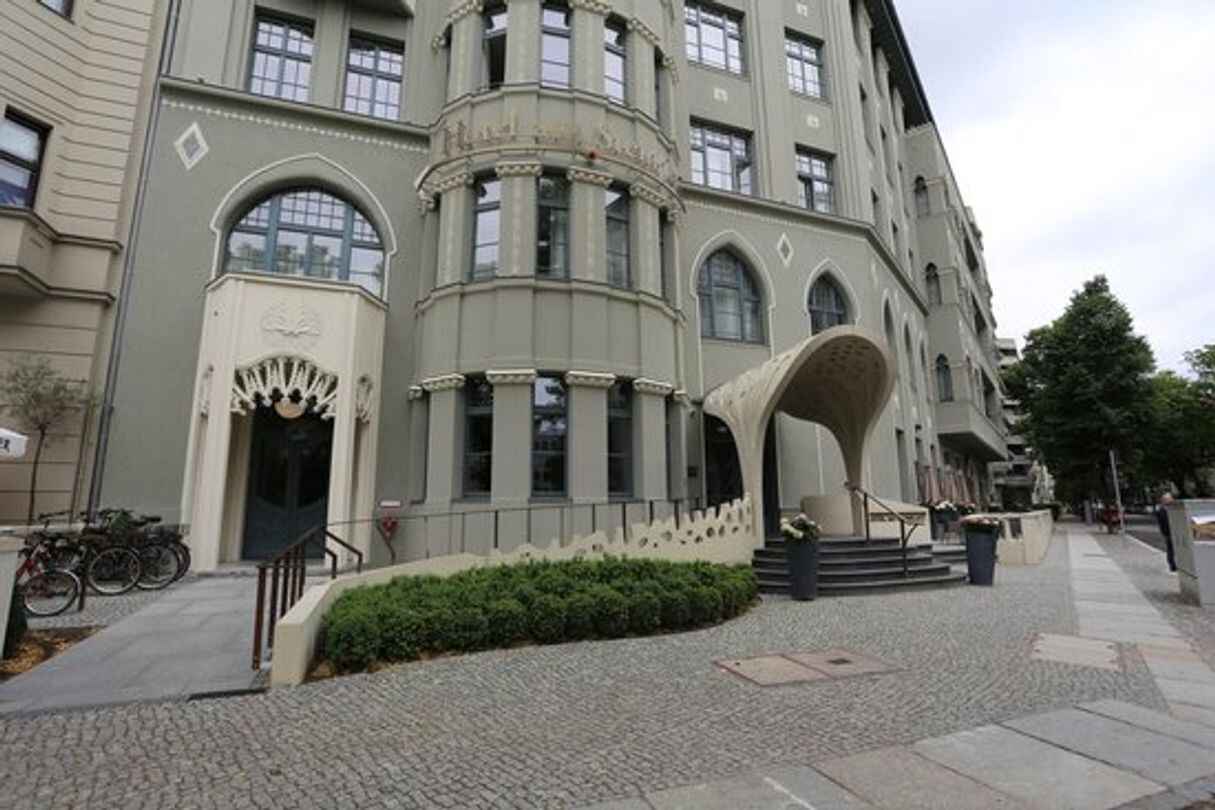
Hotel Am Steinplatz Autograph Collection
Berlin

The Westin Grand Berlin
Berlin
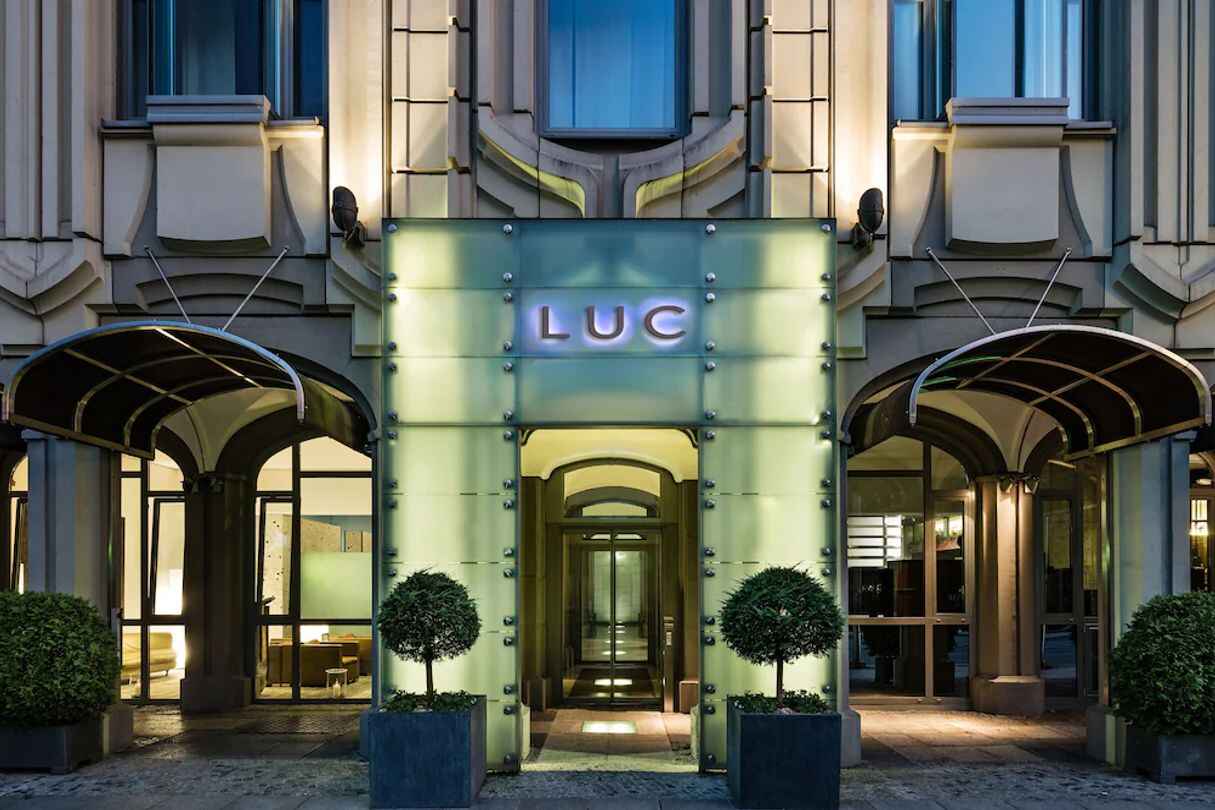
Hotel Luc Autograph Collection
Berlin

Berlin Marriott Hotel
Berlin
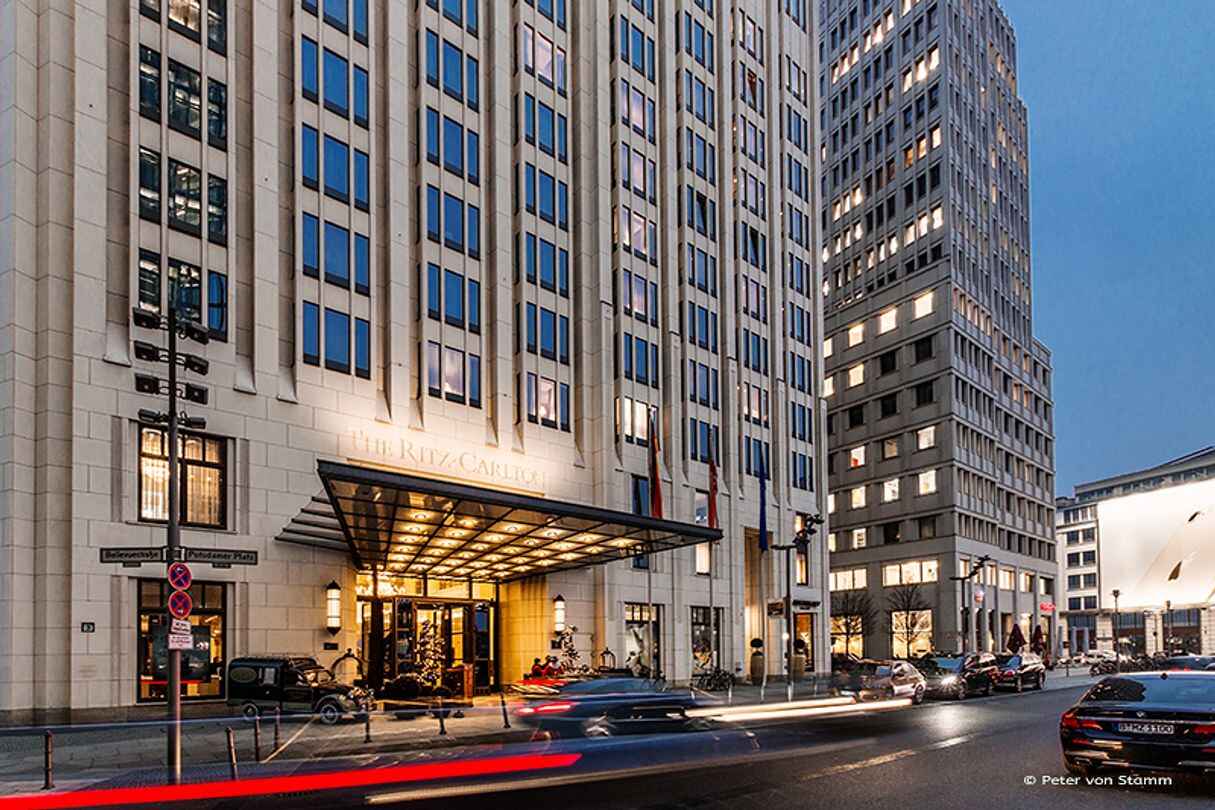
The Ritz-carlton Berlin
Berlin
-
SightseeingBerlin is teeming with history and its key attractions bear testimony to that. The sobering Checkpoint Charlie and Jewish Museum are two just examples of the many sights that serve as a stark reminder of Germany's complex past and history buffs will enjoy exploring all the museums and memorials the German capital has to offer. The remains of the infamous Berlin Wall are now the Eastside Gallery, the largest open-air gallery in the world, displaying graffiti from more than 118 artists from around the world. It has become a major landmark in the city and a wonderful tourist attraction.Younger travellers will enjoy a visit to the Legoland Discovery Centre, where the children and the young at heart can marvel at the wonder that is Lego. The historic Hamburger Bahnhof, one of the most popular art galleries, is a must for culture lovers, while the Postdamer Platz is a wonderful place to explore. The square, boasting a fantastic mix of restaurants, shopping centres, hotels, a casino, theatres and cinemas, draws both Berliners and tourists seeking good food and recreation. The Kollhoff building, located in the square, features a panorama platform, which can be reached by Europe's fastest express elevator, and offers breath-taking views of the city.The Berlin Welcome Card offers discounts on most of Berlin's major attractions, as well as free travel on public transport within the city for one adult and up to three children aged six to 13. The price ranges depending on how many days the card is required for. Culture vultures can also purchase the Berlin Museum ticket, which is valid for three consecutive days, and allows free entry to about 40 museums. Both cards can be bought from railway stations and tourist information centres, or online.The impressive and symbolic Brandenburg Gate that lay forlorn for so long in the no man's land behind the Berlin Wall, is now once again renovated and accessible, along with the newly reconstructed Pariser Platz that links the gate to the beautiful Unter den Linden Boulevard. The Brandenburg is Berlin's only remaining city gate, built of sandstone between 1788 and 1791, with 12 Doric columns according to a design by C.G. Langhans. Six columns support a 36-foot (11m) transverse beam, similar to the propylaeum of the Acropolis in Athens; the massive gate is topped with a stunning statue of the Goddess of Victory facing east towards the city centre, which was added in 1794.The gate is closed to traffic, as is the adjacent Pariser Platz, a gracious square that was once surrounded with beautiful buildings sadly destroyed in the Second World War. Since the fall of the Berlin Wall new buildings have been built, however, to designs closely following those of the originals.It is easy to hire a guide for the area and it is worthwhile because the Brandenburg Gate has an intriguing history and a special place in the German culture and hearing about its significance and past from a local greatly enriches the visit.The infamous border crossing point in the wall dividing West and East Berlin has now become a shrine to the wall's memory with the addition of a museum, Haus am Checkpoint Charlie. For nearly three decades, between 1961 and 1990, Checkpoint Charlie in the Friedrichstrasse was the only crossing point between East and West Berlin. While the original metal shed is now on display at the Allied Museum, the soldier's post can be visited, and tourists can be photographed under the border sign. The museum's permanent exhibition dates back to the building of the Berlin Wall, and charts the lifespan of the wall, including its erection, its demolition and an intriguing collection of objects used to escape over, under, and through it, and the stories of those escapees who risked their lives to win their freedom. The museum is also generally concerned with human rights. The Checkpoint Charlie Museum houses temporary exhibits, and hosts lectures and film screenings; check the website for schedules.The remains of the infamous Berlin Wall have now become the largest open-air art gallery in the world. The longest section of the wall, which has been preserved, stretches from Ostbahnhof station to the Oberbaumbrucke, and has been given over to graffiti artists from around the world. About 118 artists from 21 countries have demonstrated their skills on the 4,318 foot (1,316m) long section of the wall, and this collection has become a Berlin landmark and a tourist attraction. Some of the best known paintings are Dimitri Vrubel's 'Brotherly Kiss' and Gunther Shaefer's 'Fatherland'.The gallery is billed as an international memorial for freedom and the art reflects the idealism and excitement of 1989 and 1990 when the wall was pulled down.Parts of the wall have been or are being restored to reverse the damage done by time, weather and vandals because some of the once colourful murals created in 1989 and 1990 are now very faded. The images are restored in most cases by the original artists themselves and this ongoing project of restoration is special in itself because it keeps the wall alive in the public imagination.Since opening in 2001, the Berlin Jewish Museum in Lindenstrasse has gained an international reputation for its significant architecture and unique exhibitions that bring history to life. The bulk of the museum is housed in a windowless and doorless steel-clad, silver building, designed by Daniel Libeskind, situated alongside the yellow Baroque edifice of the Berlin Museum. The building is remarkable and designed to be intimidating.Visitors enter the Jewish Museum through the Berlin Museum to explore the exhibition rooms, which are clustered around a main axis void, designed to signify the empty and invisible aspects of Jewish history. The whole museum is beautifully designed and the exhibitions can be quite overwhelming emotionally, although this is to be expected for a museum showcasing such tragic history. The collection is a good mix between personal stories and mementos and more formal history; it is also quite interactive. The collection is extensive and will require at least a few hours to see in its entirety, particularly as the gardens are also worth a stroll.One of the most popular art galleries in Berlin is housed in a former train station. The historic Hamburger Bahnhof, built in 1846 at the Tiergarten, was badly damaged during World War II, but has been restored and reopened, with some modern elements added to the architecture, as an exhibition venue for an extensive contemporary art collection. The former station now offers 107,639 square feet (10,000 sq metres) of space filled with works by the likes of Andy Warhol, Josephy Beuys and Roy Lichtenstein. The basis of the exhibition is the Marx private collection, but there are changing exhibitions and good examples of the Italian Transavanguardia and minimalist art on show too. The gallery holds regular free guided tours for the public - to find out when these are being conducted consult the 'events' section of the website.Potsdamer Platz is the heart and soul of the 'New Berlin', which has emerged since the fall of the wall in 1989. The original square was once one of the busiest junctions in Europe, with a major train station situated on it. However, after damage during the Second World War and being cut through by the divisive wall, it became a decayed wasteland. Since the fall of the wall, however, a building boom has been taking place around the Potsdamer Platz, which now boasts an exciting mix of restaurants, shopping centres, hotels, a casino, theatres and cinemas that draws both Berliners and tourists seeking good food and recreation.The focus of the square is the 22-storey Debis Haus, designed by Renzo Piano, featuring an atrium with cathedral-like dimensions, and its neighbouring Potsdamer Platz Arkaden, a shopping mall with an Imax cinema. The Sony Centre is the most recent addition, consisting of seven buildings around a light-flooded arena, which also houses Berlin's popular Film Museum. The Kollhoff building features a panorama platform, reached by Europe's fastest express elevator, which offers views of the city.The Legoland Discovery Centre is the first indoor Legoland in the world and provides an interactive journey through a land of colour, creativity, learning and play. Kids will love themed areas like Dragon Quest, Jungle Adventure, Merlin's Apprentice, Princess Palace and Pirates Splash Battle. There is a fun factory where real Lego bricks are made, a 4-D cinema show, opportunities for visitors to make their own creations, Miniland Berlin, a themed ride, and much more all under one roof. This is one of the most fun attractions for the whole family in Berlin and endlessly popular with kids. It's also a great place to celebrate birthdays as there are special birthday party rooms for hire and all sorts of exciting extras. The park is designed mainly for kids aged between three and 10.One of Berlin's most popular attractions, this unusual exhibition recounts the history of the German capital city from its foundation until the fall of the Wall in 1989. The Story of Berlin is divided into 25 themed rooms and pays attention to the feelings, thoughts and living conditions of common Berliners. The museum is impressively well designed and compelling with modern multimedia technology in every room and a good mix of historical fact and more personal, anecdotal detail.History buffs may be disappointed that the exhibits don't go into more detail but the museum covers about 800 years of history and is understandably superficial in some respects; its strength is the recreation of atmosphere and mood in different eras and its visual representation of each period. One of its main attractions is the nuclear bunker that was built during the Cold War in the 1970s and the admission price includes a guided tour through this nuclear bomb shelter. Guided tours are available every hour, starting in the foyer.Said to be one of the most beautiful squares in Europe, the Gendarmenmarkt is certainly one of the most impressive in Berlin, created as a marketplace in the 17th century. During World War II most of the buildings surrounding the square were destroyed, but have since been reconstructed and returned to their former glory. The square is dominated by the beautiful Konzerthaus (concert house), which is home to the Berlin Symphony Orchestra, and a special place to catch a performance.The other famous buildings on the square are the twin churches of Deutscher Dom and Franzosischer Dom, identical German and French cathedrals, which are well worth a visit.The square stays busy even in winter, when Gendarmenmarkt is host to Berlin's best Christmas market and various concerts. Surrounding the plaza are a number of cafes and restaurants where visitors can rest their feet and get a good view of passers-by; it is a popular area for locals to enjoy their lunch breaks. There are usually musicians performing in the square as well which adds to the atmosphere. The Gendarmenmarkt is also really lovely at night, when the buildings are illuminated.Schloss Charlottenburg is the largest and oldest palace in Berlin, an 18th-century Baroque structure that was originally constructed as the summer home for Sophie Charlotte, the wife of Elector Frederick III who became the first Prussian king. The splendid interiors are festooned with art masterpieces, including the largest collection of 18th-century French paintings anywhere outside of France. The surrounding gardens contain a mausoleum, pavilion and the Belvedere, which houses the porcelain museum.For centuries the best artists, architects and landscapers were commissioned to improve and enrich the palace and it shows. The gardens are lovely and just as worthwhile in their own way as the palace itself. Like many attractions in Berlin, the Charlottenburg Palace was badly damaged in World War II but has since been reconstructed.Although it is a fairly long walk from the train station it is worth doing if you can manage it because your first view of the palace over the lake is really striking.The Berlin Cathedral was built between 1895 and 1905 and is a magnificent basilica that stands on the site of several earlier structures. It is the largest church in the city and is an active Protestant church that holds services, concerts and tours as well as a number of other events. Inside, the crypt contains over 80 sarcophagi of Prussian royals, while other areas of interest are the pulpit, the organ, and the stained glass windows. Visitors can climb the dome, which is decorated with intricate mosaics. The cathedral has a gift shop with books, CDs, and other souvenirs available. The cathedral is closed to tourists during religious services and visitors are asked to be respectful in the place of worship at all times. Guided tours are available and there are good-quality audio guides in multiple languages for hire.The huge Pergamon Museum has three main departments: the Antiquity Collection, the Islamic Art Museum, and the Middle East Museum, that house parts of reconstructed monumental buildings transported from excavation sites in foreign lands, or faithful replicas thereof. The Antiquity Collection contains the Pergamon Altar from the second century BC, as well as the Market Gate of Miletus from Roman antiquity; the main attraction in the Islamic Art Museum is the Mshatta façade originating from a Jordanian desert palace; while the Middle East Museum boasts the Ishtar Gare and the Procession Way of Babylon, as well as the throne room façade of Nebuchadnezzar II.This museum is consistently ranked by visitors as one of the top attractions in Berlin and it is extremely special to visit all the ancient sites preserved in its halls. Everything feels enormous and although many of the exhibits feature reconstructions rather than originals everything feels extremely authentic. There is a free audio guide available which is hugely informative.Boasting more than 30 million objects throughout its geological, paleontological and zoological collections, the Museum of Nature in Berlin is the biggest of its kind in Germany and one of the five largest in the world. Children of all ages, and adults, will enjoy discovering the extensive treasures of this incredible museum and learning while they wander around the exhibition halls, which take up a massive 71,000 square feet (6,600sq/m). Apart from the ever-popular dinosaur skeleton exhibit, highlights include sections on evolution, domestic animals, the cosmos and solar systems, minerals and much more. There are also temporary exhibitions on show - check the website for details on what is being exhibited currently.The museum is very well-organised with labels in multiple languages and audio tapes available in about 10 languages. They also organise activities and holiday schools for enquiring young minds. It is easily one of the most popular attractions if travelling in Berlin with children. It is a traditional museum but there is lots of interactive stuff to keep little ones amused.Children and families love nothing more than trips to the zoo or the aquarium, and Berlin's stunning Zoo-Aquarium combines both. The facility is one of the most popular zoos in Europe, entertaining millions of visitors each year. It offers visitors the opportunity to marvel at some spectacular animals, and with immense biodiversity children of all ages will love getting a close look at everything from rhinos to sharks to monkeys to penguins to pandas. Feedings take place daily at half-hour intervals between 10.30am and 4pm; for details on the feeding times of specific animals check the website.You can also take specialised thematic tours like South America, Asia, Africa, and Animals of the Bible. The zoo and aquarium often put on special tours for events during the year, like Halloween, Easter and Christmas, so keep a look out for these if you're travelling in Berlin with kids.The world's largest inner-city park, Tiergarten, adjoins the zoo and a visit is pleasantly combined with a stroll or a picnic in these beautiful gardens.Occupying an abandoned movie theatre, the Allied Museum is located on the former US Army Europe's Berlin Brigade headquarters, and houses exhibits and displays detailing the history of the Allied forces in Germany in World War II and up until 1994; three-quarters of the museum's collection was entrusted to Germany by the Allied forces when they departed after nearly 50 years of occupation. The museum's collections include all kinds of military memorabilia: airplanes and motor vehicles, weapons, uniforms, documents and files, photos and other artefacts, including the original Checkpoint Charlie shed.The permanent collection has three main sections: the end of the war and the famous Berlin Airlift are covered in the exhibition on the years 1945 to 1950; an outdoor exhibition featuring large artefacts like planes and sections of the Berlin wall illustrates the history of West Berlin as an island in the Soviet zone; a permanent exhibition on the years between 1951 and 1994 covers Germany's experience of the Cold War. The museum also organises periodic events like lectures and film screenings, as well as special, temporary exhibitions - check the website for specific dates.The Reichstag is one of Berlin's most famous buildings. The seat of Germany's parliament since 1894, the building has had a volatile history, being damaged in World War II, wrapped in a sheet by conceptual artist Christo in 1995, and massively reconstructed in the late 1990s. The reconstruction saw the building gutted, leaving only the facade, and the addition of a glass-domed atrium that provides panoramic views of Berlin. The views from the dome are stunning and it is well worth the visit.Note that although entrance is free the rooftop terrace and dome of the Reichstag are closed to visitors without pre-booking.There is an Arts and Architecture tour or a general tour of the Reichstag (if Parliament is not in session) available and you must contact the Reichstag directly and request a visit. Although the office is helpful there are thousands of people making this request so make sure you plan in advance (six months as a guideline) to avoid disappointment. There are free audio tapes available in a number of languages. There is also a rooftop restaurant which is very popular but for this too you will need a reservation.ClimateBerlin has a continental climate with cold winters, hot summers and fairly mild autumns and springs. Summer (June to August) weather in Berlin is pleasant and sunny, the days are long and high temperatures average 73°F (23°C), particularly in July and August. However, the summer months are also unpredictable, and the weather can rapidly change. It can also be fairly humid in summer in Berlin. Winter (December to February) weather in Berlin, by contrast, averages 32°F (0°C) and is bitterly cold and damp, with plentiful snow and frosty days when temperatures hover at or just below freezing.Although snow falls between December and March the city seldom stays covered in snow for long. Rain can fall all year round and it is always a good idea to have an umbrella in Berlin, no matter what the season; the wettest months are June and August, and the driest months on average are October and February. Berlin is a year-round travel destination because so much of the city's appeal lies in its cultural and historical attractions, which are fabulous regardless of the weather. The most popular and probably the best time to visit Berlin is in the summer months when the sidewalk cafes, parks and gardens can be enjoyed to the utmost and there are numerous fun summer events.Kids Attractions OverviewDespite its dramatic and sombre history, Berlin is arguably one of the finest cities in Europe for families to explore, offering kids on holiday a multitude of activities and attractions, from the world's largest inner-city park to LEGOLAND and everything in between.Active families will enjoy heading out to areas like Grosse Muggelsee for a spot of swimming, boating or hiking, while places like Wannsee are great for escaping to the outdoors for a break from traditional sightseeing and the chance to blow off some steam.Animal and nature lovers will go wild for the Berlin Zoo-Aquarium which has an incredible collection of animals and many fun activities, and the Berlin Botanical Gardens, which offer plenty of space for children to run around. The many impressive squares of the city also provide areas for amusement and lots to keep young minds busy and happy.When the weather turns bad and kids' activities out of doors are few and far between, head to one of Berlin's indoor playgrounds or one of the many museums the city has to offer, such as the Nature Museum (Museum fuer Naturkunde), which will take up most of the day with hundreds of exhibitions. Museums like the Pergamon will also entrance children.
-
NightlifeFamed for its nightlife and close on Amsterdam's heels for the title of Europe's most liberal city, Berlin offers visitors just about everything from avant-garde and trendy bars to seriously sexy underground clubs, artistic local hangouts, and world-class performing arts. Berlin's club scene mushroomed incredibly fast after the fall of the Berlin Wall, with locals excited to take advantage of their new freedom; the clubbing scene in Berlin is now one of the most competitive and stimulating in the world. Foreigners may find it hard to get into some of the top clubs, as bouncers have a reputation for being strict and highly selective; having some local knowledge or a local guide is a big advantage.The Mitte district is a hip and happening spot and boasts some of Berlin's top clubs and bars, but it can be quite touristy. New clubs regularly spring up in Prenzlauer Berg and Friedrichshain, while Kreuzberg is fast becoming a popular hangout with locals and immigrants and is distinguished by its edgy atmosphere. Schoneburg offers some superb cafes, clubs and saunas and is quite popular with Berlin's gay community, as is Nollendorfplatz and its 'pink village'.Berlin offers plenty of Kneipes(neighbourhood pubs) where local brews and old favourites can be sampled. Cabaret is still a popular pastime in Berlin and there are many cabaret clubs dotted around this vibrant city offering satirical shows that make fun of the political and social scene. Live music clubs dominate a lot of the city showcasing both well-known and amateur acts in just about every type of atmosphere, from small and intimate clubs to grungy music halls.Public transport is easily accessible, making a night out on the town a pleasure to navigate. Visitors in Berlin will just have a tough time narrowing down where to spend their evenings!
-
RestaurantsA melting pot of cultures and culinary delights, restaurants in Berlin stir together some of the most exotic flavours from the four corners of the globe and it is easy to find almost any kind of food. Berlin's culinary traditions have been immensely influenced over the years by its vibrant immigrant community and worldwide favourites such as pasta, pizza and curry now have a firm place on the city's restaurant menus. Chinese, Greek, Indian and Thai cuisine are becoming increasingly popular with new eateries springing up at a rapid rate.The city's flagship dish is the simple, yet satisfying boulette, a combination of fried meatball and hamburger, which is often accompanied by Berliner Weiße, a traditional mix of beer and juice which is well-known even beyond the city's boundaries. The highly popular Doner Kebab,originally developed in Berlin but made famous by the Turkish, is one the most popular fast food dishes. Simple German staples like beer and pretzels are also fun to sampleGenerally the central Mitte area, which also contains many of the prime tourist sights, is the best bet for eating out in Berlin. Brimming with a wide variety of restaurants, Oranienburger Street is a particularly good option, featuring many of the city's most popular restaurants and a great atmosphere.
Name: Nocti Vagus Dark Restaurant
Address: Saarbrücker Str. 36-38
Website: www.noctivagus.com
This unique restaurant serves food in completely dark rooms by blind waiters. The idea is that diners will concentrate more on the taste of the food if other senses are deprived, and it seems they are right. The unseen food is delicious and the unusual sensation of eating in the dark is novel and fun, with plenty of giggling in the restaurant.Name: Dachgarten
Address: Platz de Republik 1
Website: en.feinkost-kaefer.de/berlin
One of the latest 'in' places to dine in Berlin is the Dachgarten in the rooftop dome of the new futuristic Parliament building (the Reichstag). From the dome, in the historic centre of Berlin, there are amazing views across the city. The menu is delightful too, including healthy traditional cuisine like the light fish and venison dishes. Reservations are vital unless you wish to join a long queue, and your best bet of getting a table is at breakfast.Name: Heising
Address: Rankestrasse 32
Website: www.restaurant-heising.de
An elegant and opulent dining experience, Heising serves up high-quality French cuisine. All meals are served on KPM porcelain and beautifully presented. The restaurant is open daily for supper, from 7pm. Reservations are recommended.Name: Haveli
Region/City: Barcelona
Address: Luitpoldstrasse 26
Website: www.haveliberlin.de
Haveli is consistently rated very highly by tourists and is a great option for those seeking out good-value Indian food. The restaurant is family-run, the portions extremely generous, and the food delicious.Name: Diekmann im Weinhaus Huth
Address: Alte Potsdamer Strasse 5, Tiergarten
Website: www.j-diekmann.de
Emulating a Paris bistro the Weinhaus Huth is an interesting dining venue not because of its décor or a particularly outstanding menu, but because the building which houses it is the only original standing building left on the Potsdamer Platz, having survived the ravages of war and the demolition of the Berlin Wall. It is now surrounded by the shining new Sony centre and draws tourist interest. Highlights on the menu include tarte flambee and fresh oysters.Name: XII Apostel
Address: Bleibtreustrasse 49
Website: www.12-apostel.de
You cannot beat the thin base pizzas that keep customers flocking to this lively restaurant in Charlottenberg. The XII Apostel is trendy and popular because of its novel idea of offering 12 pizza varieties, one named for each apostle of Jesus Christ. The biggest and tastiest is reputedly the Judas. The décor is flashy Italian Renaissance and the atmosphere is usually busy and bustling.Name: Zur Letzten Instanz
Address: Waisenstrase 14-16, Mitte
Website: www.zurletzteninstanz.de
This historic establishment off Alexanderplatz should be on any visitor's sightseeing list not only for its hearty German comfort food (like Eisbein, potato dumplings, suckling pig and red cabbage) and tankards of beer, but also because it is the oldest restaurant in Berlin, documented as far back as 1525. The name, Zur Letzten Instanz, was inspired by a nearby courthouse and means 'without further appeal'. Napoleon is said to have dined here. The restaurant is open Monday to Saturday, 12pm to 1am.Name: Ganymed
Address: Schiffbauerdamm 5, Berlin-Mitte
Website: www.ganymed-brasserie.de
Traditionally a popular if not fashionable spot to dine after the theatre, Ganymed has been around for decades serving good food in generous portions, gamely continuing to do business in East Berlin throughout the Cold War years. There are two formal dining rooms, one overlooking the Spree. Examples of menu highlights are goose liver terrine, Eisbein, schnitzels, mussels in Choron sauce and pheasant breast wrapped in Black Forest ham. -
Culture
Berlin International Film Festival
Venue: Potsdamer Platz
Start: 2019-02-07
End: 2019-02-17
Notes: 7 - 17 February 2019
Website: www.berlinale.de
The coveted Silver and Golden Bears of the Berlin International Film Festival are the symbol of achievement in one of the top events in the film industry. The Berlinale has become one of the biggest and most reputable festivals in the international business of artistic media and film, where world-class filmmakers launch their latest achievements under various categories in the competition.Film screenings are shown in a variety of festival cinemas, and differentevents include filmmaking workshops, and opportunities for young producers and directors toscreen one-minute films during the festival.The Berlin International Film Festival attractsmany celebrities and has an impressive red carpet turnout which delights the many spectators.There are a variety of interesting competitions and events associated with the festival eachyear and it is a fun and glamorous time to be in Berlin. For details on what is showing andwhat's on every year check the official website listed below. The site also provides photos,videos and live streaming for your amusement.Christopher Street Day
Start: 2018-07-28
End: 2018-07-28
Notes: 28 July 2018
Website: www.csd-berlin.de
The gay pride parade on Christopher Street Day has its origins in New York's Christopher Street, which was the site of violence between customers in a gay bar and raiding police in June 1969. To commemorate the social 'coming out' of gay and lesbian communities, huge street parties and parades take place all over the world on this day to celebrate a greater tolerance among the public and to demonstrate self-confidence in their homosexuality. It is a huge, colourful festival with hundreds of thousands of participants, including many heterosexual revellers and supporters of the cause. The organisation's core belief is that ignorance and fear is at the root of homophobia and that raising awareness and public support will greatly improve the lives of homosexual people by encouraging them to be proud and the public to show support. This enormous party for a good cause is spectacular and very popular and has become an important day on Berlin's calendar.Classic Open Air
Venue: Gendarmenmarkt
Start: 2018-07-05
End: 2018-07-08
Notes: 5 - 8 July 2018
Website: www.classicopenair.de
Set in one of Europe's most beautiful squares, Classic Open Air stages the romantic summer sounds of classical music presented by internationally acclaimed musicians, conductors and composers. The concert series attracts large crowds to evenings of music under the starlit sky, against the romantic backdrop of the Gendarmenmarkt which boasts some stunning architecture. The concerts have been running since 1992 and seem only to get better and better. The shows are not limited to classical music and have included opera, jazz, stage musicals, classic pop, soul, swing, blues and much more. The performances are also visually impressive as they include fireworks, light shows and lasers. For more information check out the official website for details on the programme, the price of tickets and suggestions about accommodation.Berlin Christmas Markets
Venue: Various
Start: 2018-05-14
End: 2014-12-31
Notes: December annually
Website: www.germany-christmas-market.org.uk
During the festive season, more than 40 Christmas markets pop up around the city of Berlin. They attract visitors with traditional arts and crafts, Christmas lights, decorations, and the smell of glühwein, gingerbread, and roasted nuts.Santa Claus, music and dance, fairytales, and puppetry are there to entertain the children while shoppers can browse through antique toys and doll makers, candles, woodwork, and a variety of traditional goods.The suburb of Spandau allegedly has Europe's largest Christmas market, where stalls spread throughout the Old Town and provide a traditional experience. The Christmas markets of Germany are becoming increasingly popular as people yearn for a less commercial experience of the season.They enjoy the nostalgia and charm of traditional gifts and decorations. Nothing is mass-produced and the atmosphere is old-fashioned. Berlin has some of the best of these markets in Germany, drawing flocks of visitors every year.Berlin Marathon
Start: 2018-09-26
End: 2018-09-26
Notes: 26 September 2018
Website: www.berlin-marathon.com
Taking runners past most of the famous sights of the historic city, the annual Berlin Marathon is one of the most popular in the world, and ends at the imposing Brandenburg Gate. It is an extremely popular marathon and the limit of 40,000 runners is generally reached a few hours after entries open for the event; if you want to compete in this famous race you must be quick off the mark! The route of the marathon is interspersed with about 80 live music stages where bands urge on competitors and entertain spectators. This remarkable music marathon makes the race even more special: some participants are even lucky enough to have requested songs played for them as they approach the finish line. There are plenty of refreshment stations and medical tents along the route to take care of the runners' needs and stalls pop up to feed and amuse spectators as well.The Berlin Jazz Festival
Venue: Various
Start: 2018-11-01
End: 2018-11-04
Notes: 1 - 4 November 2018
Website: www.berlinerfestspiele.de
The Berlin Jazz Festival is one of the world's premier jazz festivals and a highlight on the Berlin musical calendar, with a range of concerts taking place all over town and in a variety of different settings, from casual jazz clubs to big professional arenas.Founded in 1964, it is consistent in its popularity and standard of its programme. Some of the most famous names in the business are attracted to this annual event, with big American names like Herbie Hancock and Lee Konitz making an appearance.World music bands also feature on the programme, bringing a lot of originality and range to the festival. Berlin is always a great city to visit if you are a lover of jazz music, but Jazzfest truly showcases the city's jazz scene. -
ShoppingBerlin may not be known as a shopper's paradise, but don't be fooled; the German capital can give even the most seasoned of power-shoppers a run for their money. There are plenty of opportunities for shopping sprees, with goods ranging from expensive designer merchandise to humble flea market wares and everything in between. There are also some good antique marketsLuxury designer boutiques can be found lining the streets at the west end of Kurfürstendamm and in Friedrichstrasse. All the different shopping precincts have their own distinctive style and the best boutiques are often tucked away in backstreets or quiet courtyards. The main shopping districts are the Kurfürstendamm, Breitscheidplatz, and for some bargains, a quick stroll in the Budapestststrasse and Tauenzienstrasse could prove worthwhile. One of the trendiest shopping streets is the Schönhauser Allee, which boasts countless independent shops offering the latest fashion and young independent designer labels which can be snatched up for a song.Most major stores are open from about 9.30am to 8pm during the week and between 9am and 4pm on Saturdays. Most stores are closed on Sundays, except for small stores in the main train stations.
-
Getting AroundThe Berlin public transport system is efficient, if expensive, and the combination of buses, trams, ferries, the U-Bahn (underground) and S-Bahn (commuter rail) reaches every part of the sprawling city and its surrounds. The U-Bahn and S-Bahn are the best ways of getting around; buses cover the parts of the city that cannot be reached by train, and East Berlin has a network of modernised pre-war trams. One type of ticket is valid on all forms of transport and fares are divided into three colour-coded tariff zones.Driving in Berlin is easier than in most big cities, but in general is still not recommended, as traffic is heavy and parking difficult to find and expensive. Taxis are plentiful, but it is cheaper to hail one in the street than to call ahead at one of the many call stands around the city. Cycling is also recommended, especially in West Berlin, which is well-equipped with cycle paths and trains that have special cars where bicycles can be carried.
-
HealthThere are no serious health risks for visitors to Germany and no vaccinations are required. The German health service is excellent. There is a reciprocal health agreement with the UK and most EU countries, whose citizens are entitled to free medical and dental treatment on presentation of a European Health Insurance Card (EHIC). Nationals of other countries should take out medical insurance.
-
Passport/VisaThe borderless region known as the Schengen Area includes the following countries: Austria, Belgium, Czech Republic, Denmark, Estonia, Finland, France, Germany, Greece, Hungary, Iceland, Italy, Latvia, Lithuania, Luxembourg, Malta, The Netherlands, Norway, Poland, Portugal, Slovakia, Slovenia, Spain, Sweden, and Switzerland. All these countries issue a standard Schengen visa that has a multiple entry option, and which allows the holder to travel freely within the borders of all the aforementioned countriesAdditionally, non-EEA members require proof of (i) onward or return tickets, (ii) the necessary travel documentation for their next destination, and (iii) sufficient funds to support themselves while in Germany. Note that citizens of Australia, Canada, Israel, Japan, New Zealand, Switzerland, and the USA are exempt from the requirement to hold onward tickets. It is highly recommended that your passport has at least six months validity remaining after your intended date of departure from your travel destination. Immigration officials often apply different rules to those stated by travel agents and official sources.
-
SafetyA visit to Germany should be trouble free, but take normal precautions to avoid mugging, bag-snatching and pick-pocketing, especially at airports, railway stations and markets in the large cities.






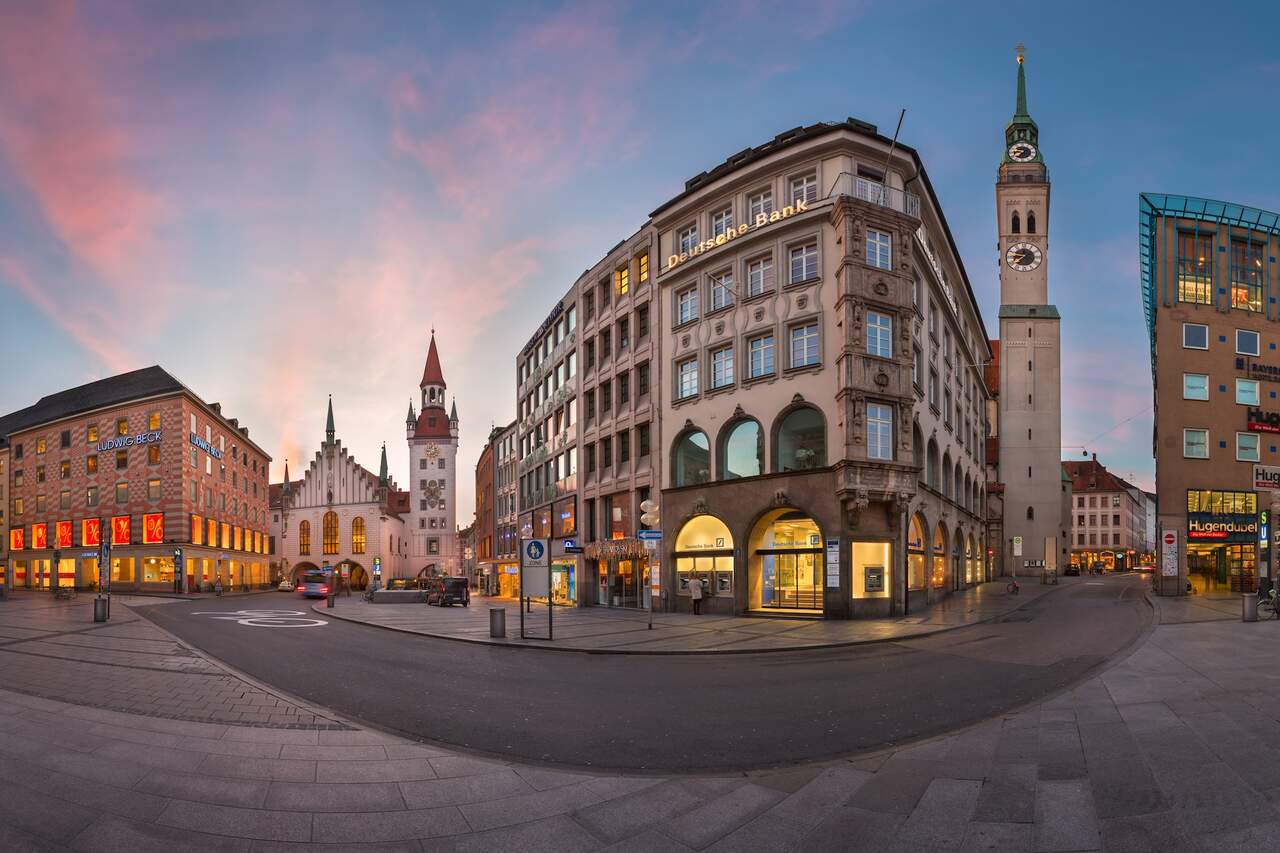

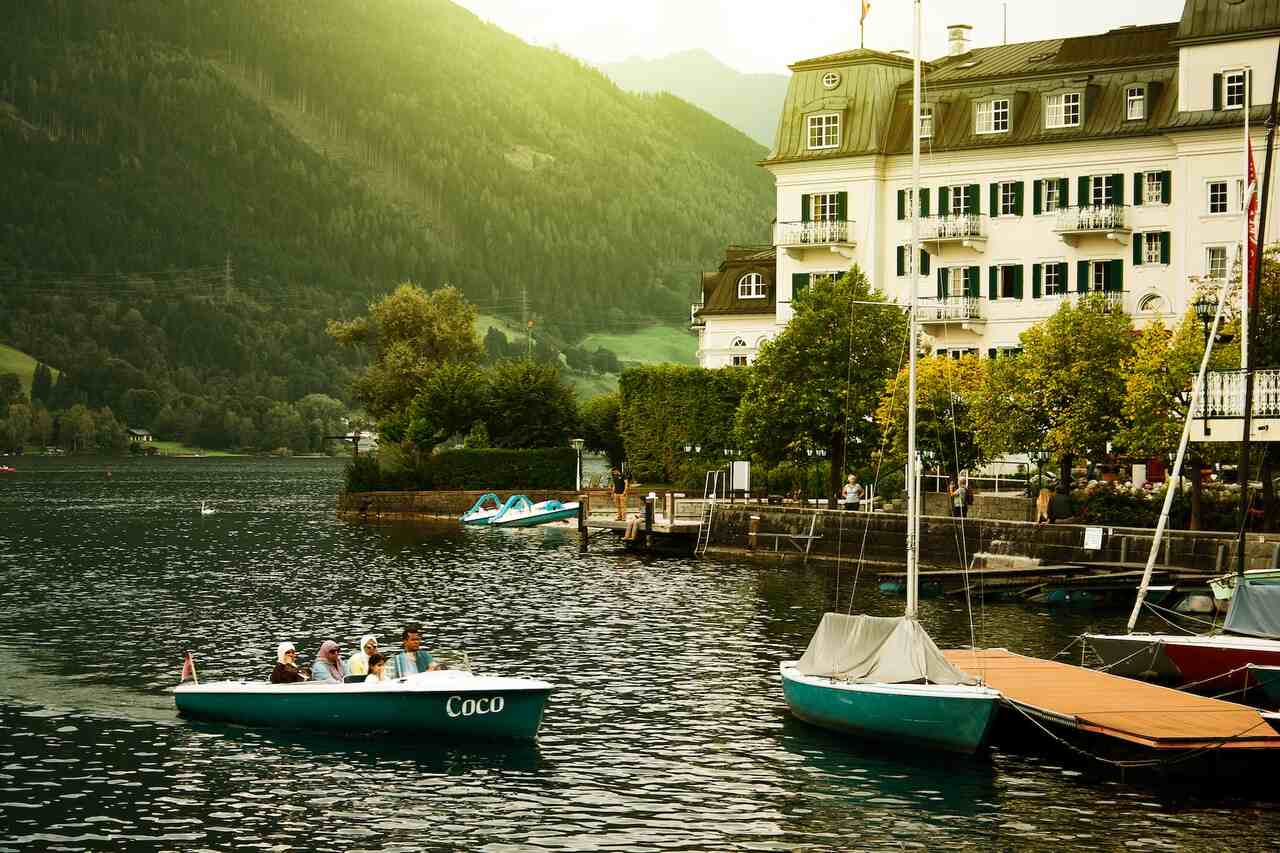
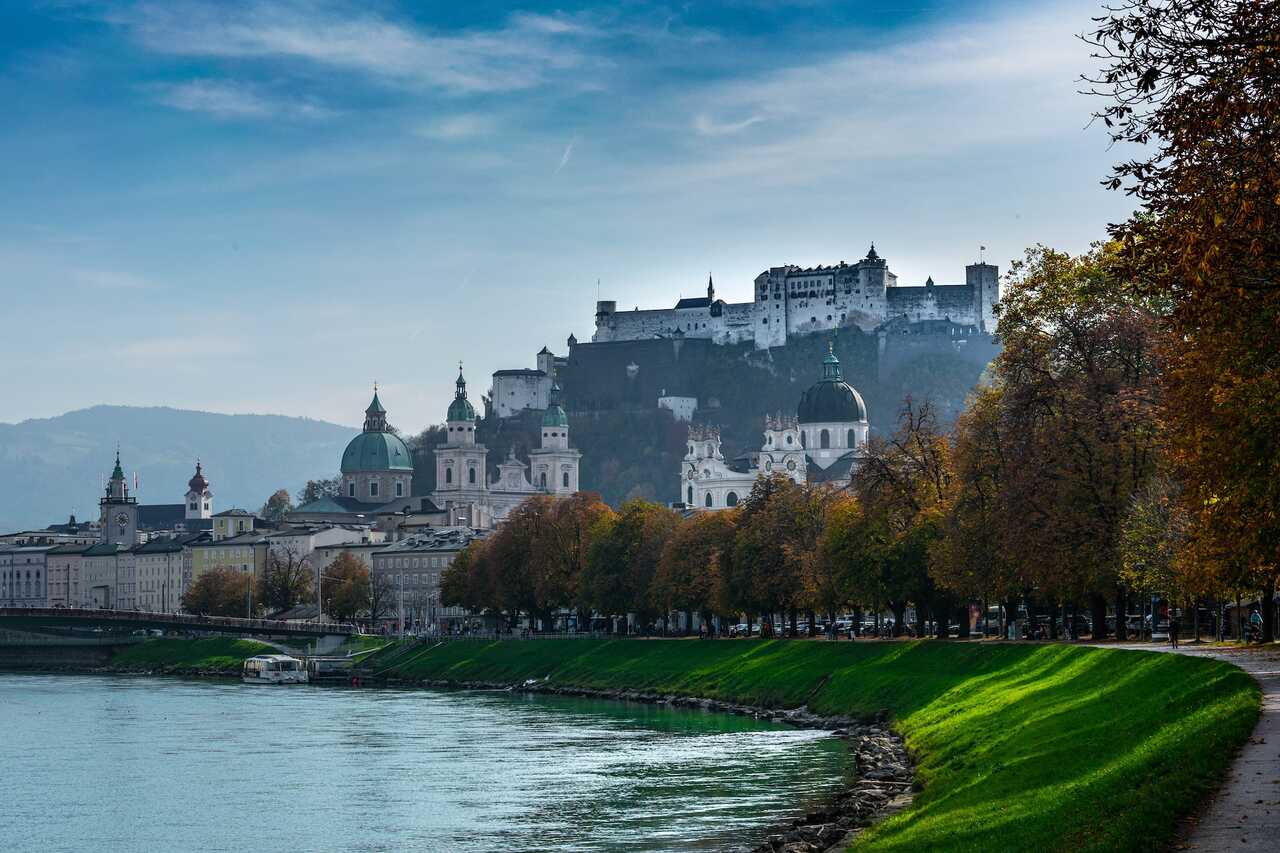
















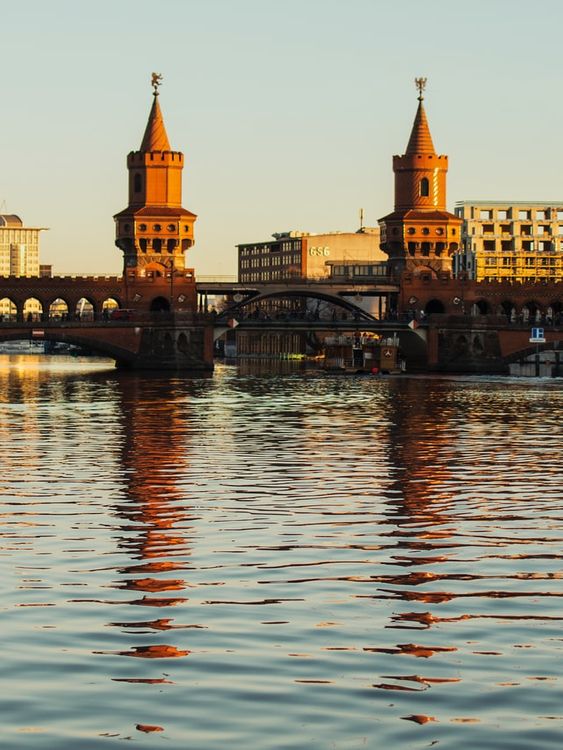
 Enquiry Now
Enquiry Now